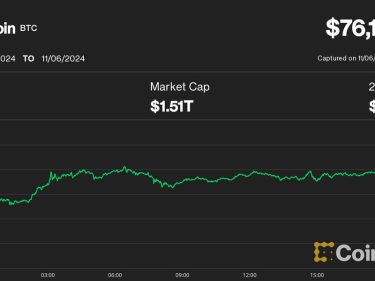A common trope of those who discredit Web3 is that it’s trying to solve a problem no one has. And, perhaps it’s easy to see it that way when you mostly see celebrities launching meme coins to self-enrich themselves and leaving their fans being the bag holders when the tokens go to zero. Or the animal JPEGs from the last cycle in 2021 that had values as high as six and seven figures. I’ve found myself disillusioned at those things too.
What if that wasn’t the case, though? What if Web3 was at the precipice of one of the most exciting times for building real-world value since the inception of the idea of blockchain? Welcome to Decentralized Science (DeSci).
DeSci is a movement leveraging blockchain technology to create a fair and equitable infrastructure for scientific research. It aims to enhance the processes of funding, creating, reviewing, crediting, storing, and disseminating scientific knowledge through the use of Web3 tools, including tokens, NFTs, and decentralized autonomous organizations (DAOs).
By fostering an open and incentivized environment, DeSci seeks to empower community-driven collaboration in the scientific field. All the tools we’ve been using can now be applied in ways that create both societal and monetary value. Maybe the world wouldn’t hate us so much if we could deliver this across verticals but starting with scientific innovation is a good one.
One might be tempted to ask why we need DeSci if we already have the traditional scientific method that’s been delivering value for longer than most of us realize. Well, with just a bit of research, you’ll understand that traditional science really needs an overhaul. The problems lie with publishing, reproducibility, funding, the way IP works and even how the data is stored.
Publishing scientific work is fraught with challenges, starting with the exorbitant fees charged by publishers. These publishers rely on unpaid labor from scientists, reviewers, and editors to generate content, yet charge the public — who indirectly fund this research through taxes — high prices for access. Web3 tools have the potential to address this issue by creating open-access platforms that incorporate legitimacy and incentive mechanisms, effectively bridging this gap. Without naming the guilty publications, I’ll just say it’s all the best ones.
Ensuring reproducibility and replicability is crucial for high-quality scientific discovery. Reproducibility means researchers can consistently achieve the same results, while replicability means different groups can achieve the same outcomes using the same methods. Web3-native tools can embed these principles into scientific research by providing attestations for raw data, computational engines, and application results, all validated by a reliable network. This would avoid problems with important Alzheimer’s research that was allegedly fabricated.
The traditional funding model for scientific research is often inefficient and biased, leading to long delays and a hyper-competitive environment. Web3 introduces new funding models, such as retroactive public goods funding, quadratic funding, DAO governance, and tokenized incentive structures. These models promote a fairer and more efficient distribution of resources. At the moment, in the United States, the National Science Foundation (NSF) and National Institutes of Health (NIH) funds a significant portion of all science in the country, letting these unaccountable institutions decide what is and isn’t legitimate inquiry. Seems like a broken model if you ask me. (Together, the NIH and NSF contribute about $57.5 billion to federal R&D funding, or approximately 33.6% of total federal R&D funding in 2022.)
In traditional science, intellectual property (IP) often gets stuck in universities or goes unused. Web3 offers a solution through digital asset ownership via NFTs, creating transparent value attribution chains that reward researchers and governing bodies. IP-NFTs can also serve as keys to decentralized data repositories and can integrate with DeFi for financialization, nurturing a new research ecosystem. Personally, I can’t wait for NFTs that actually have utility instead of the garbage we’ve been promised by popular projects for years.
Web3 technologies can significantly enhance the accessibility and storage of scientific data. Distributed storage solutions ensure data resilience and availability even in catastrophic events. Systems with proper verifiable credentials can enable secure data replication, redundancy, and censorship resistance, fostering collaboration. Decentralized public data solutions like IPFS, Arweave and Filecoin provide the foundation for open science, allowing researchers to create public goods without access restrictions or fees.
Now, take all of that and tell me there isn’t a time coming where we’ll see a DeSci Summer happen with tokens that will also take off in an unprecedented way. Instead of selling us on the 100th decentralized exchange, or another 3,000X DeFi protocol, investors might start reading white papers to understand where the next valuable company might come from. We’d get the smartest minds working on the hardest problems, instead of the next best tokenomics ponzi. It would mean societal and monetary value at the same time.
Imagine if the next breakthrough medication, akin to Pfizer or Tylenol, could be funded through a decentralized, transparent process? This would not only democratize the funding of critical research, but also ensure that the rewards and recognition are fairly distributed among all contributors. DeSci has the potential to revolutionize scientific research, making it more inclusive, efficient, and innovative, and paving the way for groundbreaking advancements that benefit society as a whole. Maybe if we do this right the world wouldn’t hate Web3 so much.
Note: The views expressed in this column are those of the author and do not necessarily reflect those of CoinDesk, Inc. or its owners and affiliates.




